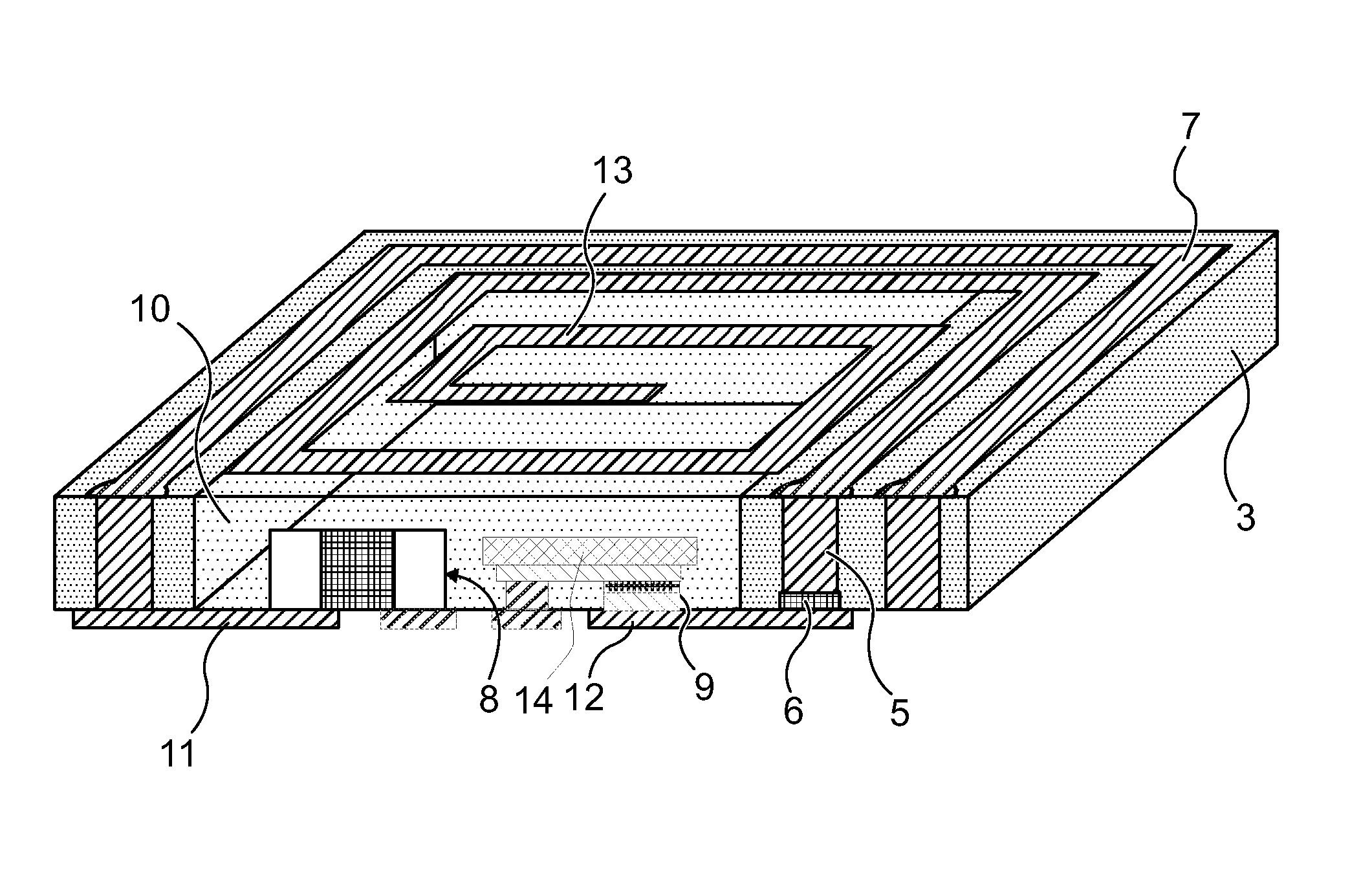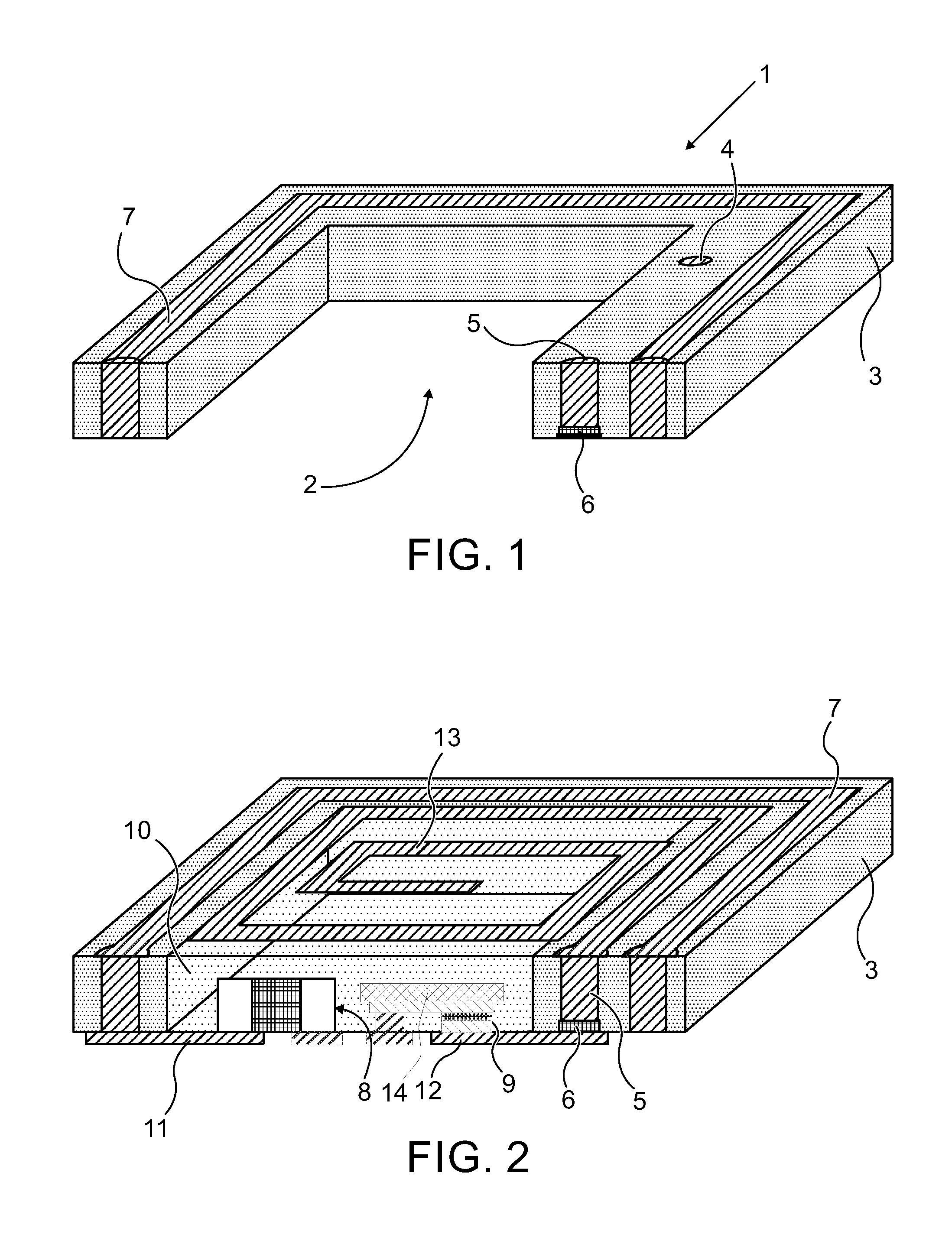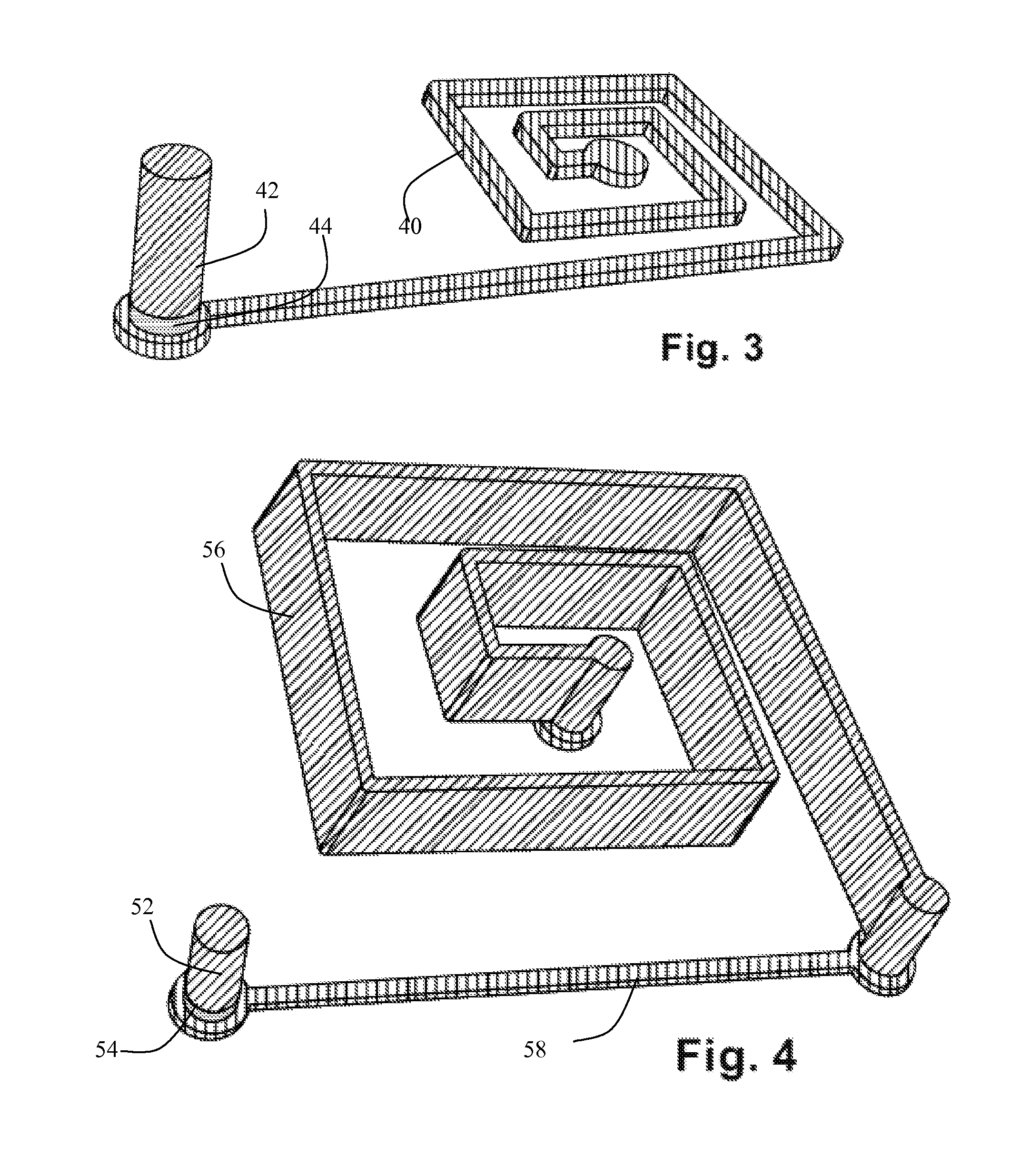Polymer Frame for a Chip, Such That the Frame Comprises at Least One Via in Series with a Capacitor
a polymer frame and capacitor technology, applied in the field of embedded chips, can solve the problems of high cost of manufacturing complex, low production efficiency, and inability to produce high-quality vias at a high density, and achieve the effects of enhancing reliability of rf (radio frequency) technologies, reducing manufacturing costs, and increasing production efficiency
- Summary
- Abstract
- Description
- Claims
- Application Information
AI Technical Summary
Benefits of technology
Problems solved by technology
Method used
Image
Examples
Embodiment Construction
[0149]In the description hereinbelow, sockets structures for embedding chips are considered. The socket structures consist of metal vias in a dielectric matrix, particularly, copper via posts in a polymer matrix, such as polyimide, epoxy or BT (Bismaleimide / Triazine) or their blends, reinforced with glass fibers.
[0150]The socket structures described below further comprise capacitors built into the frame of the socket. Such capacitors are typically Metal Insulator Metal (M-I-M) Capacitors which comprises a lower metal electrode that may be gold, tantalum or tantalum, and an inorganic dielectric layer that may be Ta2O5, TiO2, BaxSr1-xTiO3, BaTiO3 or Al2O3, for example. The capacitor may comprise a dedicated upper electrode that is typically gold, tantalum or tantalum, or, the via, typically copper, may be deposited thereover as the upper electrode.
[0151]Since parallel plate capacitors comprise a dielectric material sandwiched between electrodes that is typically a material with a very...
PUM
| Property | Measurement | Unit |
|---|---|---|
| capacitance | aaaaa | aaaaa |
| capacitance | aaaaa | aaaaa |
| capacitance | aaaaa | aaaaa |
Abstract
Description
Claims
Application Information
 Login to View More
Login to View More - R&D
- Intellectual Property
- Life Sciences
- Materials
- Tech Scout
- Unparalleled Data Quality
- Higher Quality Content
- 60% Fewer Hallucinations
Browse by: Latest US Patents, China's latest patents, Technical Efficacy Thesaurus, Application Domain, Technology Topic, Popular Technical Reports.
© 2025 PatSnap. All rights reserved.Legal|Privacy policy|Modern Slavery Act Transparency Statement|Sitemap|About US| Contact US: help@patsnap.com



